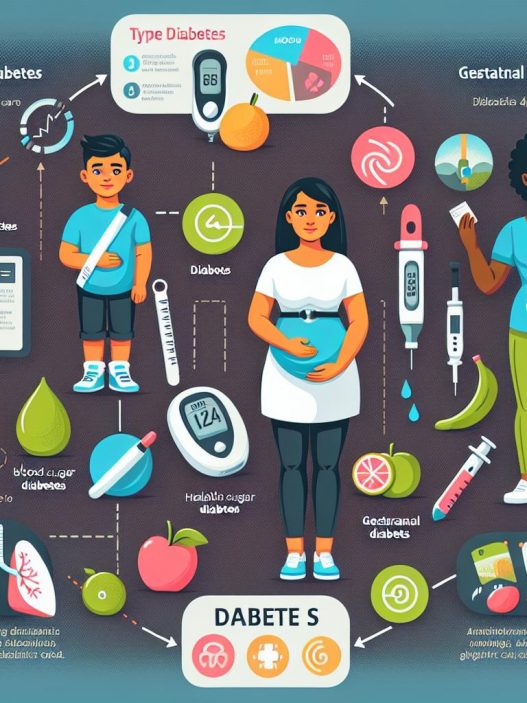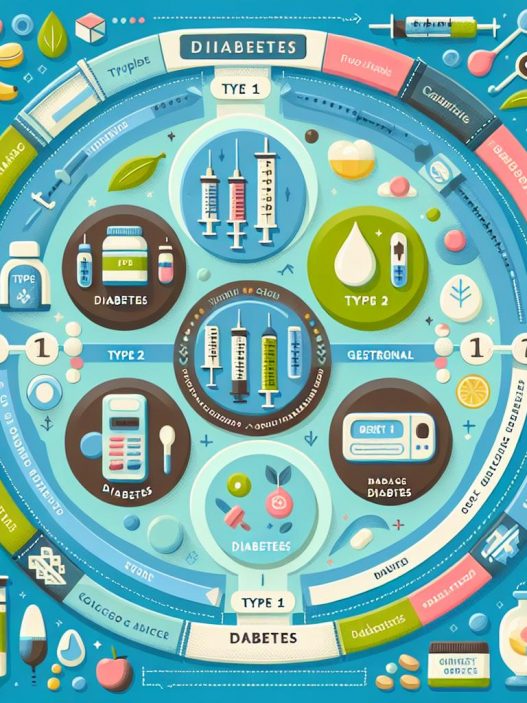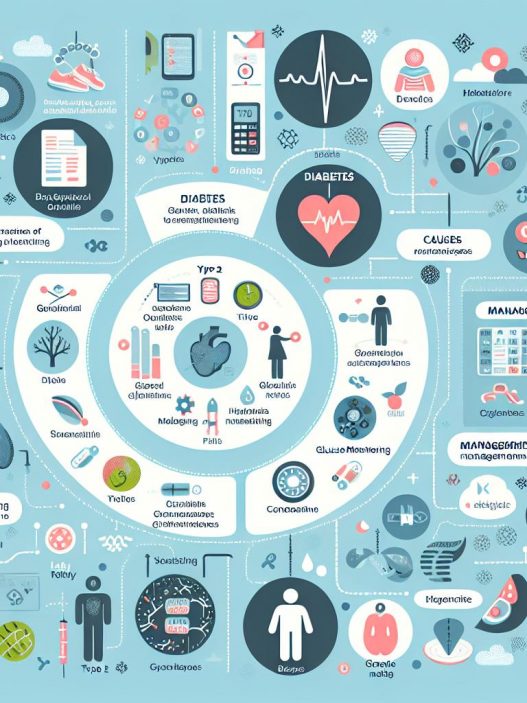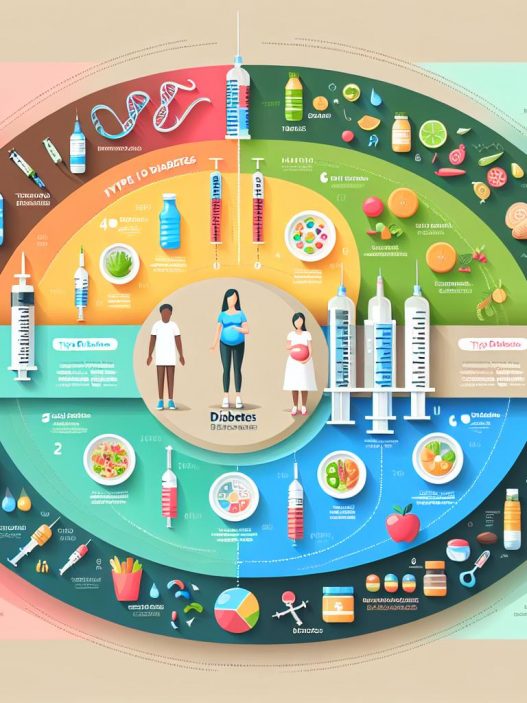# Navigating the Complex Landscape of Diabetes: Understanding Types, Causes, and Treatments
Diabetes is a chronic health condition that affects millions of individuals worldwide, manifesting in various forms that require unique management strategies. Understanding the types, causes, and treatments of diabetes is essential for effective management and prevention. In this comprehensive guide, we will delve into the complexities of diabetes, offering valuable insights and actionable information to help you navigate this challenging landscape.
Understanding the Different Types of Diabetes
Diabetes mellitus is classified into several types, each with distinct characteristics and implications for treatment. The most common types include Type 1, Type 2, and gestational diabetes. Type 1 diabetes is an autoimmune condition where the body’s immune system attacks and destroys the insulin-producing beta cells in the pancreas. This type is often diagnosed in children and young adults, leading to a necessity for lifelong insulin therapy.
Conversely, Type 2 diabetes is more prevalent and is primarily linked to lifestyle factors such as obesity, sedentary habits, and poor dietary choices. Unlike Type 1, it generally develops in adults, although increasing rates in children are being observed due to rising obesity rates. Gestational diabetes occurs during pregnancy and can pose risks to both the mother and the fetus if not effectively managed. Understanding these distinctions is crucial for recognizing the need for tailored treatment plans.
Causes of Diabetes: Unraveling the Complexity
The causes of diabetes are multifaceted, involving genetic, environmental, and lifestyle factors. In Type 1 diabetes, genetics play a significant role; however, the exact triggers remain elusive. Researchers believe that an autoimmune response, potentially triggered by viral infections or environmental factors, may lead to the destruction of insulin-producing cells.
On the other hand, the development of Type 2 diabetes is predominantly linked to lifestyle factors. Obesity, particularly visceral fat accumulation around the abdomen, leads to insulin resistance, a condition where the body’s cells do not respond effectively to insulin. Lack of physical activity, unhealthy eating patterns, and genetic predisposition also contribute to the development of Type 2 diabetes. Understanding these causes is fundamental for individuals seeking to mitigate their risk factors and adopt healthier lifestyles.
The Role of Genetics and Family History in Diabetes
Genetics significantly influence diabetes development, particularly in Type 2 diabetes. Studies indicate that individuals with a family history of diabetes are at a higher risk of developing the condition. Specific genes associated with insulin regulation and glucose metabolism have been identified, underscoring the hereditary nature of the disease.
In Type 1 diabetes, the familial link is paramount, as individuals with a first-degree relative diagnosed with the condition are at an elevated risk. However, environmental triggers are also necessary for its onset, highlighting a complex interplay between genetics and external factors. Understanding these genetic predispositions can empower individuals with knowledge about their health and guide preventive measures.
Symptoms of Diabetes: Recognizing the Warning Signs
Recognizing the symptoms of diabetes is crucial for early diagnosis and treatment. Common symptoms include excessive thirst, frequent urination, extreme fatigue, and blurred vision. Additionally, individuals may experience unintended weight loss and slow-healing sores or frequent infections. Awareness of these signs enables timely medical consultation and intervention, which can prevent the onset of more serious complications.
In Type 1 diabetes, symptoms often appear suddenly and can escalate quickly, sometimes leading to a life-threatening condition known as diabetic ketoacidosis. In contrast, Type 2 diabetes symptoms often develop gradually, making them easy to overlook. Regular monitoring of one’s health and a proactive approach to recognizing changes can aid early detection, improving long-term outcomes.
Complications of Diabetes: Understanding the Risks
The implications of uncontrolled diabetes extend beyond elevated blood sugar levels. Chronic diabetes can lead to severe complications, including cardiovascular disease, nerve damage, kidney damage, and vision problems. Individuals with diabetes are at increased risk of heart attack and stroke due to the detrimental effects of high blood sugar on blood vessels.
Moreover, diabetic neuropathy, a condition resulting from nerve damage, can cause pain, tingling, and loss of sensation in the extremities. Likewise, kidney damage, known as diabetic nephropathy, can impair kidney function and may progress to kidney failure. By understanding these potential complications, individuals with diabetes can become more proactive in their management and care, taking necessary steps to mitigate the risks.
Key Management Strategies for Diabetes
Effective diabetes management requires a multifaceted approach that includes lifestyle changes, monitoring blood sugar levels, and, when necessary, medication. A balanced diet rich in whole foods, vegetables, and lean proteins while low in refined sugars can significantly influence blood sugar control. Carbohydrate counting and understanding glycemic index can also empower individuals to make informed dietary choices.
Regular physical activity is another cornerstone of diabetes management. Engaging in aerobic exercises, strength training, and flexibility workouts can help improve insulin sensitivity and further regulate blood sugar levels. Additionally, routine monitoring of blood glucose levels aids in understanding how diet and exercise impact individual health, allowing for better-informed decisions about lifestyle and medication.
Treatments: Medications and Insulin Therapy
Treatment options for diabetes have advanced significantly in recent years, expanding beyond traditional insulin injections. For Type 1 diabetes, insulin therapy remains the cornerstone of treatment, with several types of insulin available to control blood sugar levels. Continuous glucose monitors and insulin pumps offer innovative, real-time solutions to help individuals manage their diabetes more effectively.
For Type 2 diabetes, various oral medications can help manage blood sugar levels. These include Metformin, which enhances insulin sensitivity and reduces glucose production in the liver, and other classes of drugs designed to stimulate insulin secretion or slow absorption of carbohydrates. Lifestyle modifications and weight management also play pivotal roles in treatment, often making it possible to control blood sugar without insulin in some cases.
Preventive Measures: Reducing the Risk of Diabetes
Preventing diabetes, especially Type 2, involves implementing a healthy lifestyle and being mindful of risk factors. Maintaining a healthy weight through balanced nutrition and regular physical activity can significantly reduce the likelihood of developing diabetes. Focus on a diet rich in whole grains, fruits, vegetables, and healthy fats while limiting processed foods.
Additionally, regular health screenings and assessments can help identify early signs of insulin resistance or elevated blood sugar levels. For those predisposed to diabetes, engaging in preventive programs, such as lifestyle intervention initiatives, can provide structured support and education to facilitate positive changes. By taking these preventive measures, individuals can significantly lower their risk of developing diabetes and its associated complications.
—
In summary, navigating the complex landscape of diabetes requires a comprehensive understanding of its types, causes, symptoms, complications, and management strategies. By arming yourself with knowledge and adopting proactive lifestyle changes, you can take significant steps toward mitigating the risks associated with this chronic condition. Whether you are seeking to manage diabetes or prevent its onset, understanding its complexities will empower you to make informed decisions for a healthier life.





















